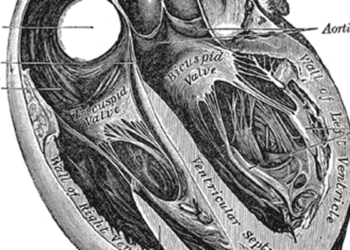Unnecessary care in Medicare population found to be prevalent
Image: PD
1. Low-value or unnecessary care was found to affect 42% of Medicare beneficiaries or 25% using a more narrow definition of inappropriate care.
2. Low-value or unnecessary care constituted 2.7% of the overall cost-of-care for the population or 0.6% using a more narrow definition of inappropriate care.
Evidence Rating Level: 3 (Fair)
Study Rundown: With the recent CMS release of national Medicare claims data, there is an amplified spotlight on the value of care provided to Medicare beneficiaries. Using Medicare claims from 2009 (n=1,360,908), this research team developed a method to identify low-value services and investigated the prevalence, and financial impacts, of unnecessary care. Based on a broader set of conditions for defining inappropriate care, 42% of beneficiaries were found to be treated with low-value or unnecessary services constituting 2.7% of the overall spend. Using a more narrowly defined set of conditions for defining inappropriate care, researchers found 25% of beneficiaries treated with low-value or unnecessary services, making up 0.6% of the overall spend. Given the findings, researchers concluded that low-value services were pervasive, but had only a modest financial impact. As with any study using claims data, there are significant assumptions involved in determining the clinical context of the medical event. That being said, authors provided thoughtful analysis and transparency into their process of determining “low-value” care.
Click to read the study in JAMA Internal Medicine
The value of low-value lists
In-Depth [Medicare claims study]: Researchers identified 26 medical services (diagnostic, therapeutic, and procedural) that were found to provide limited clinical benefit based on evidence from the American Board of Internal Medicine Foundation’s Choose Wisely Initiative and the National Institute for Health and Care Excellence. The selected low-value services were then chosen based on their Medicare applicability. Without full knowledge of the clinical circumstances surrounding each medical claim, researchers developed two sets of conditions for each service based on the assumed appropriateness of care. One set of conditions were more broad with regard to inappropriate care, while a second set of conditions had a more specific and narrow assessment of inappropriate care. The most common low-value or unnecessary service identified in the study was “imaging for nonspecific low back pain”. The broader definition of inappropriate was “Back imaging with a diagnosis of lower back pain” (12.4 services per 100 beneficiaries). The more restrictive definition of appropriate was “No diagnoses in claim warranting imaging; imaging occurred within 6 weeks of the first diagnosis of back pain” (4.5 services per 100 beneficiaries).
More from this author: Medicaid beneficiaries among most frequent visitors to the emergency department; Emerging coronavirus found to spread in healthcare facilities; CT scans linked to cancer risk in children;Slowdown in healthcare costs linked to economic and clinical factors;
©2012-2014 2minutemedicine.com. All rights reserved. No works may be reproduced without expressed written consent from 2minutemedicine.com. Disclaimer: We present factual information directly from peer reviewed medical journals. No post should be construed as medical advice and is not intended as such by the authors, editors, staff or by 2minutemedicine.com. PLEASE SEE A HEALTHCARE PROVIDER IN YOUR AREA IF YOU SEEK MEDICAL ADVICE OF ANY SORT.







